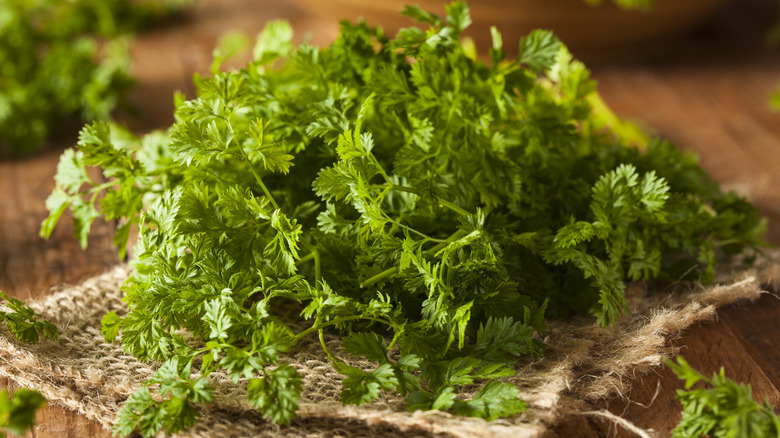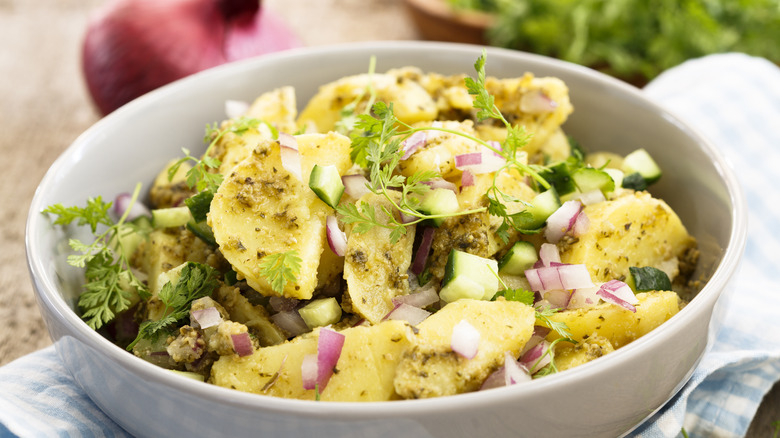Chervil Is The Parsley Substitute You Should Try
Parsley may be a classic, but there's no need to limit yourself to the same herb time and time again. For a unique substitute, why not give chervil a try? Part of the Apiaceae family, chervil is closely related to herbs like parsley and cilantro. Guaranteed to captivate your senses, chervil is an herb worth exploring.
At a glance, chervil and parsley may seem interchangeable, which might be why the herb is also dubbed French parsley. However, parsley has dense and flat green leaves, whereas chervil is instead recognized by its paler hue and curlier leaves. In terms of taste, both have an herbaceous and vegetal freshness. But, chervil tends to boast a more delicate profile. It's precisely this mild and mellow quality that sees chervil often used in conjunction with other leafy herbs, such as the case with seasoning blends like the French favorite, fines herbes. On the other hand, that doesn't mean that the richly nuanced chervil isn't just as wonderful when used on its own.
Faintly reminiscent of clean and peppery parsley and licorice-esque tarragon, replacing parsley with chervil will give any recipe a complex edge, thanks to the herb's underlying notes of anise. Just remember that capturing the essence of chervil is instead more complicated — it's typically recommended to work with an equal ratio of both parsley and tarragon to achieve the herb's one-of-a-kind flavor.
What to remember when swapping parsley for chervil
For a hit of vibrancy, simply fold the herb into an omelet, whisk into a Green Goddess salad dressing, or blend into a cold soup. You can even highlight the herb's subtly sweet notes of licorice by using it in a compound butter, infused oil, or pesto to spread over crostini, or marbling it into risotto or topping grilled fish.
The next major question is, fresh or dried? Just like parsley, fresher is (almost) always better when it comes to chervil. That said, just-picked stems are ideal when used as a garnish or as final addition so as not to cause wilting or reduce aroma and flavor. In contrast, dried is better for cooking. Just keep in mind that the same rules apply — only add chervil toward the end of the cooking process.
As for where to find chervil, dried herbs can be found in the spice aisle of any supermarket. Fresh can be harder to locate given its seasonality (it peaks in the spring), so you may need to venture to specialty stores or farmers markets. If you have a green thumb, you could also grow some yourself and reap the benefits of having ultra fresh chervil at your disposal whenever you please.

